The estimate for the attrition rate of the British F-35 fleet is ‘on average 1 aircraft lost for every 30,000 flight hours’.
The information came to light in a response to Mark Francois MP who asked:
“To ask the Secretary of State for Defence, what estimate he has made of the future attrition rates of F-35 aircraft.”
Jeremy Quin, Minister for Defence Procurement, responded:
“A certain attrition of aircraft is built into the procurement profile. The fleet size assumes a risk of on average 1 aircraft loss every 30,000 hours.”
What is ‘attrition rate’?
The United States Air Force define it as “a factor, normally expressed as a percentage, reflecting the degree of losses of personnel or materiel due to various causes within a specified period of time”. Basically, it’s how many they expect to lose over a certain period of time due to accidents and other causes.
What’s the status of the UK F-35 fleet?
Since the delivery of the first jet in 2012, the United Kingdom F-35 programme has expanded tremendously. Recently, the UK fleet reached a new milestone, when it crossed the threshold of 10,000 flight hours. However, a more negative milestone was the first British loss of an F-35 at sea.
Last month, three more F-35B aircraft were delivered to the UK, bringing the fleet to 24 aircraft. The aircraft flew from Texas to RAF Marham by 207 Squadron and were assisted in crossing the Atlantic by a Voyager tanker.
Six more jets will arrive in 2022 and seven more will arrive in 2023 with an expectation that all of the 48 in the first batch will be delivered by the end of 2025.


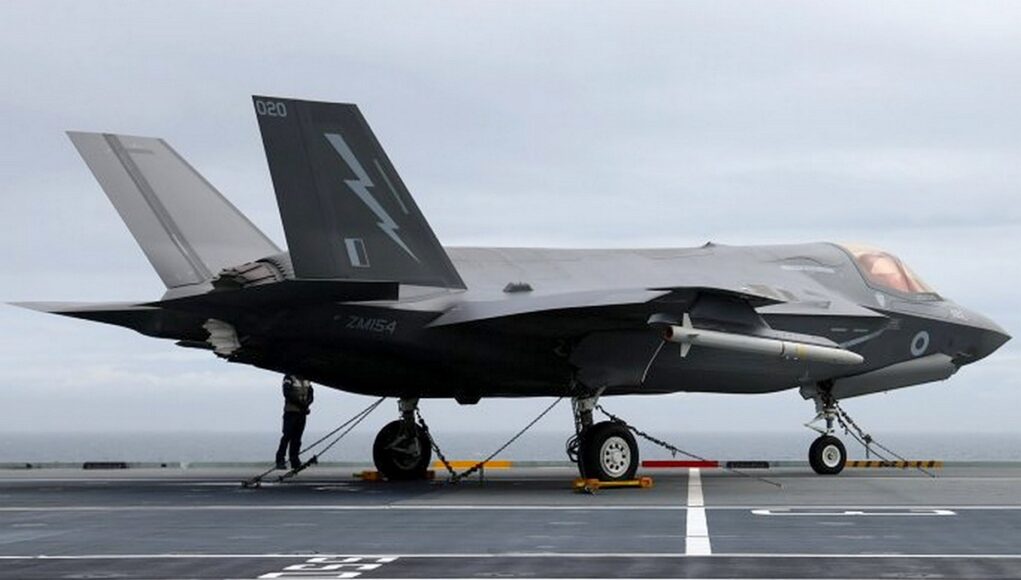
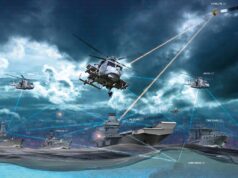

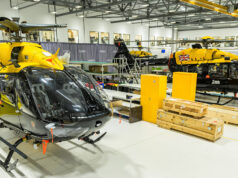



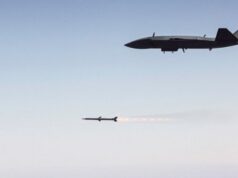
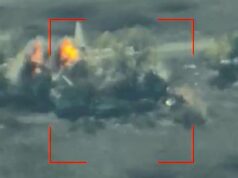

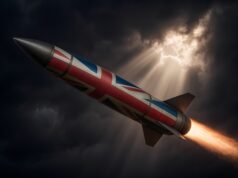

NAWCAD Patuxent River came up with another figure that included the B’s Lift Fan extrapolated from what can only be called euphemistic figures and even they did not get near this number quoted here for the “Grey Anchor” aka F-35B . Do not get me wrong , F-35 is in a class of it’s own , think before and after Link-16 and multiply it by Six . In fact i will go as far as to say the whole of your Typhoon force is really irrelevant in comparison ; but the B is a good way to expand on “risk” for an already unqualified gamble .
If the typhoon is irrelevant due to the f35 then surely the us f15/16/18 are irrelevant too?
I believe the US doctrine is that F-35 is needed to degrade enemy A2AD and then 4th gen jets like F-15/16/18 follow in as bomb trucks to carry most of the air-to-ground ordnance once the A2AD bubble is burst.
I think the RAF is thinking like this too vis a vis F-35 and Typhoon.
F-35 has an exquisite set of capabilites to penetrate enemy air defences – stealth, electronic attack, superb sensors – but limited payload in that role due to the requirement for a weapons bay. On the other hand 4th Gen jets can lug a lot of ordnance and are being given capacity to lug even more.
The US used F-117 like this in the Gulf War.
The USAF are looking a low cost precsion guided bombs to make this economic. We need these to arm Typhoon and Mosquito drone teams. https://www.thedrive.com/the-war-zone/43332/the-air-force-wants-a-new-generation-of-affordable-air-to-ground-munitions-with-swappable-warheads
How is the Typhoon force of about 160 aircraft (fewer when the 50 or so Tranche 1 aircraft are retired) irrelevant to the UK? It is a very capable muti-role fighter and air superiority fighter that has been upgraded well and many times since its introduction to squadron service in 2006.
A key point is that Typhoon is operated by the RAF from its land-bases and is focussed on air defence of the UK and British Overseas Territories, and could deploy forward to NATO air bases or a friendly Host Nation in support of a major operation against enemy air or ground forces. F-35B is operated off carriers for defence of the fleet and littoral operations. Different aircraft, different jobs. Both are very good.
Also we are probably only buying 60-80 F-35s, so we need those 100+ Typhoons as well – they are far from irrelevant.
Finally, is it proven that the F-35B is as good a dogfighter as Typhoon?
To be honest the way things are going in Russia I wouldn’t be surprised if the decision to scrap the older Typhoons is reversed and we see the Tranche 1 aircraft upgraded and retained in the fleet.
Sean doesn’t have a clue what he’s on about. Typhoon is the backbone of the RAF and is more than a match for just about any enemy aircraft it’s likely to come up against.
ETA: the way things are going with Russia, not in Russia.
I would say they are both a bit concerning
Thanks Steve, we need every aircraft we can get if there is war against a peer or near-peer opponent. I have never before heard that Typhoon is inadequate or irrelevant.
Wouldn’t a purchase of more Tranche 3 or even Tranche 4 be a better option than trying to bring the T1 jets up to standard? Or is that a cost the RAF don’t want to go for in case it interferes with Tempest?
I agree and that’s what I would do; get another 40-50 or so Tranche 3 or 4 Typhoons, I just don’t believe for a moment they’d even entertain the notion of that. Would be instantly deemed to expensive.
Might also be quicker to upgrade the Tranche 1s, in case of SHTF. I honestly don’t know on that, however. Just a guess.
Mate I know what I am talking about , and if your ever in the company of one of your RAF or Navy Pilots or any one who is in the know you will only get the same answer . Maybe even with more vitriol especially if that individual flew both and then knew what the Government was doing by even allowing Typhoons of any Tranche to be on the flight line . Typhoon is a beast for sure but a 20 year late interpretation of Boyd’s energy maneuver tactics ; F-35 is his OODA loop made real . Stop with the garbage , your like one of those idiots of the 19th century talking about trains and how they are the future of warfare without stating the name Maxim once .
I wonder what the attrition rate in prolonged warfighting against a peer opponent would be and if that is factored into the orders.
It certainly always was with army vehicles.
Interesting question – probably not. Think how long 148 Challenger 3 might last?UK unlikely to fight any ‘prolonged’ war against a peer opponent, certainly not on its own. Even with NATO I would think the plan would be to blunt any aggression early to give time for diplomacy. Any long term conflict with our peers risks serious escalation. The strategy, even in the Cold War, has always been to make states believe it’s not worth it.
I can’t think of the last time the UK fought a peer opponent without allies, whether prolonged or short, so I agree with that statement.
I was army and we used to have such a thing as WMR – War Maintenance Reserve – for use in General War ie war attrition equipments – we did not double-hat the training fleet for war attrition stocks as it was considered that collective training would continue during Transition To War (TTW) and into war itself; WMR were additional to training equipments.
We also had Battle Casualty Replacements (BCRs) which were replacement people.
Alarming if WMR is a thing of the past.
Its been argued most of the Navys and Airforces of the world only have enough smart munitions for a couple of days intensive conflict, once you have emptied your ships VLS tubes you will be lucky if theres enough for a full restock and it would take best part of a year for manufacturing to be set up to deliver significant replacements to maintain combat temp.
So day three starts with medium guns at dawn and machine guns at high noon.
Its not factored into any of the UK military orders. Forces are spread paper thin in peacetime never mind war, add combat attrition into the equation and there is zero capacity to cope with losses. None. Zilch. Anywhere. Its a reckless all your eggs in one basket approach of relying on plan A working. There is no plan B.
No plan survives ………………………………………………………..
Agree that things are spread extremely thinly. If the RAF can keep its long-serving squadron structure though, it has a little strength in depth.
A fast jet squadron with 12 front-line aircraft has 3 in squadron reserve, 3 in war reserve and 1.5 in attrition reserve. If you take it across say, a 4-squadron Typhoon FGR4 fleet,* there will be 51 front-line aircraft (including the Falklands flight) and as many again in reserve and training, viz:
13 in squadron reserve
12 in war reserve
6 in attrition reserve
4 for the two Wingcos
5 in the OEU/TWU unit
12 in the OCU
,= 53.
So there is a limited reserve of aircraft to call on in a very short war, but alas I doubt we have the munitions to arm them for more than a few days.
* Talk of 7 Typhoon squadrons is just shape-shifting by the MOD and our political masters. The only way we could field 7 would be by reducing the squadrons’ front-line combat strength from 12 to 8.
It is a bit of political trickery only – three years back, the RAF was happily assuring audiences that it had the green light to ncrease to 10 fast jet squadrons. After the recent cut of the tranche 1 F2s and the disappearance of a large chunk of the 138 F-35s, we will have just six, with no prospects of more.
Oops, quick spin answer needed: if we cut the squadron strength from 12 front line to 8, we can CLAIM that we will have 9 or 10 squadrons, the punters won’t know that we’ve cut them down to glorified flights.
Hi Cripes. Thank you for outlining this info. I’ve been interested in understanding this topic better, and this is really on point.
Another point worth considering is the “artificial” increase of Typhoon squadrons to 7. There were 5 previously, with 3 squadrons of GR4s too. With their demise and slow progress of F35 they formed 2 additional Typhoon squadrons out of the same pool of aircraft to keep from dropping to 6 squadrons, 5 Typhoon, 1 F35.
So reality is numbers fall again and squadrons remain at 8, with less planes.
Whether that remains so now tranche 1 are chopped too who knows.
All smoke and mirrors.
The army are at it themselves with the DRSBCT and 4 LBCT, neither of which are self contained deployabe formations, so why are they labeled as BCT?
Spin. They might fool most but not all.
Perhaps Plan B is to ‘go nuclear’ because conventional platforms and smart munitions are exhausted – or simply to surrender?
It would be criminally catastrophic for any state to go nuclear simply because they’ve run their conventional forces so low as not to be able to mount a sustained conventional defence; but that is where we seem to be at the moment.
I wouldn’t class dropping off the Ramp of QE in the count of attritional losses a one off not a technical or Airframe or Action loss / failure but basic deck team and pilot error it was the first and hopefully the last bloody big 126
The F35 is a multiplier. To see the ratio in figures is a good sign of a durable aircraft. The mistake that happened where the f35 crashed is what machines and humans do, they fail eventually. Mistakes happen everyday. I’m still happy with the aircraft and the high level skill set of our brother and sisters across the pond that utilize and deploy this aircraft.
Is there a known attrition rate for when the plane is on the ground – for example by fire or wind damage?
Where does falling off a flight deck fit in these calculations?
I think “Falling off a flight deck” fits in the FUBAR column.
some harriers have managed to get destroyed on the ground.
Attrition on the ground is another factor that would be hard if not impossible to predict – a recent case is the 2011 Tohoku Earthquake in Japan where the JASDF lost several Aircraft including some precious F2’s.
Well at least it’s not as bad as Harrier attrition rates, the things practically rained out of the sky.
Some of them even managed to eject their pilots simply because the felt like it. They also seem to have had a close affinity to nature and fields in the south west.
actually, Harriers in UK hands were not that bad, USMC lost loads was one of the worst Loss rates including Pilots as it was complicated to fly.
hi Johan, the records of U.K. write offs for harriers was around 109, a handful of these were accidents or losses on the ground, but most occurred due to bits falling of or breaking.
They’ve come along way then… the Harrier was something like 1 plane for every 1,000 sorties!